This is a review or something, though with the added complication that I know almost nothing about typewriters. But I also can’t just let this chunk of obsolete metal sit here and not talk about it.
It’s this:
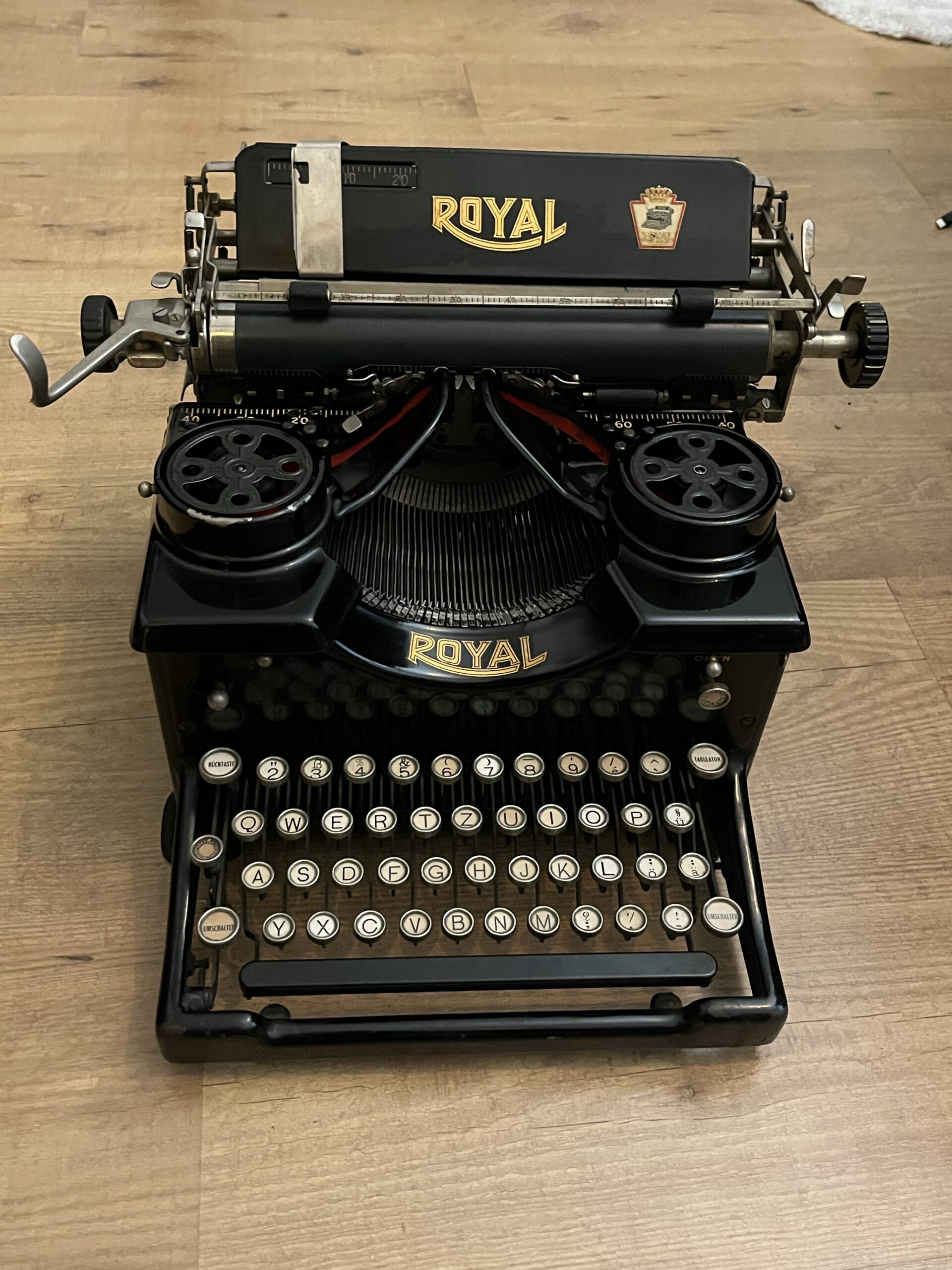
It’s a Royal 10, made in the US, serial number X-1081691, which means it was made in 1927, with a German keyboard – and, the party piece, it has the italic typeface:
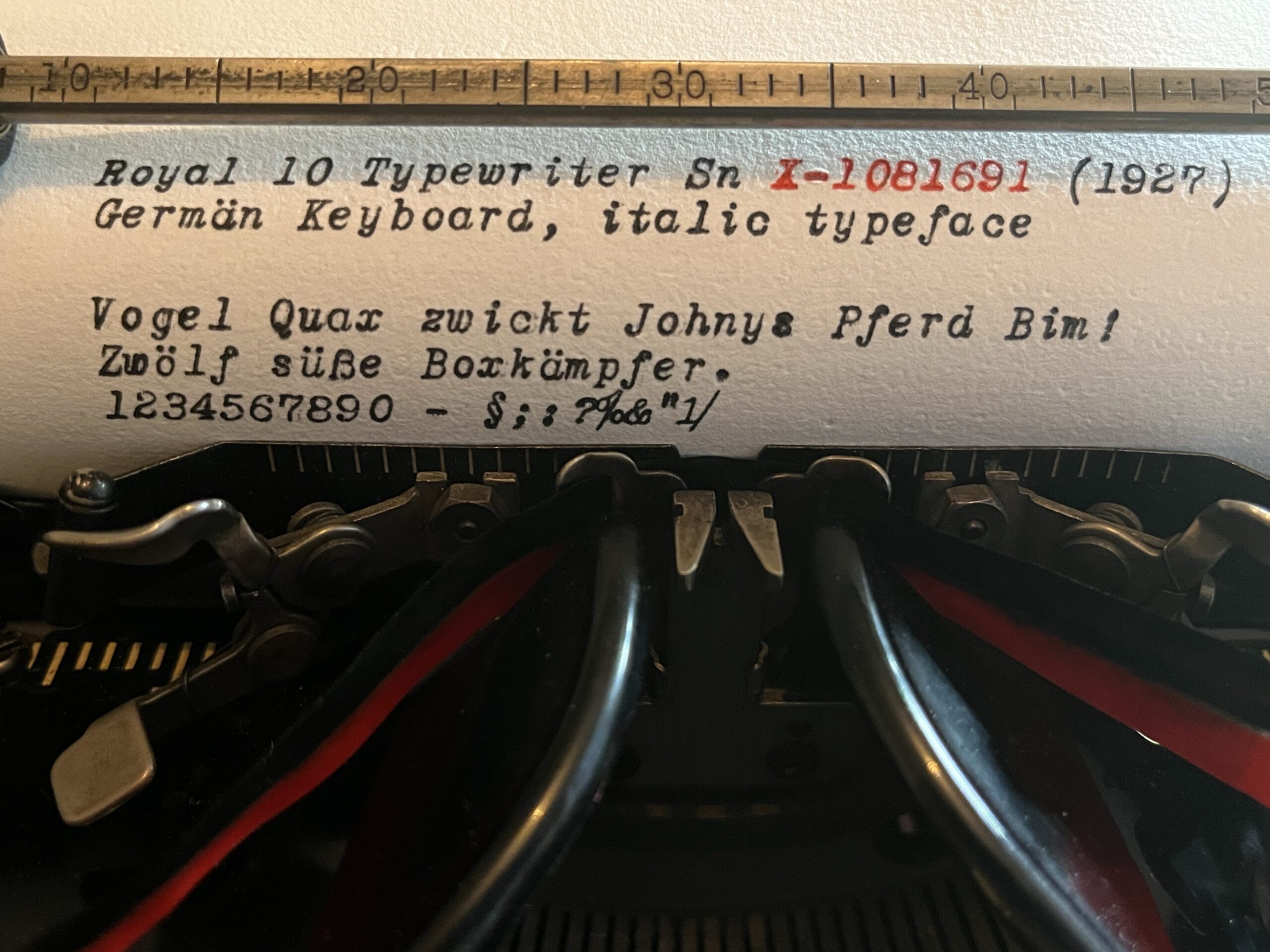
Apparently that isn’t very common to have, on a full-sized machine. If the internet is to be believed, these would generally go to businesses, which preferred the more serious standard typeface. Private individuals would be more likely to choose alternative typefaces, but would also generally buy the portables, not the 400 metric ton standard machines. I don’t know if that is true but it does sound plausible.
It’s in what I would call great condition. It doesn’t look like new, but I mean, it isn’t. Totally fine with me. In fact, I prefer my obsolete machinery to show some signs of age. I cleaned it a little bit, but not very much and it basically worked right out of the box.
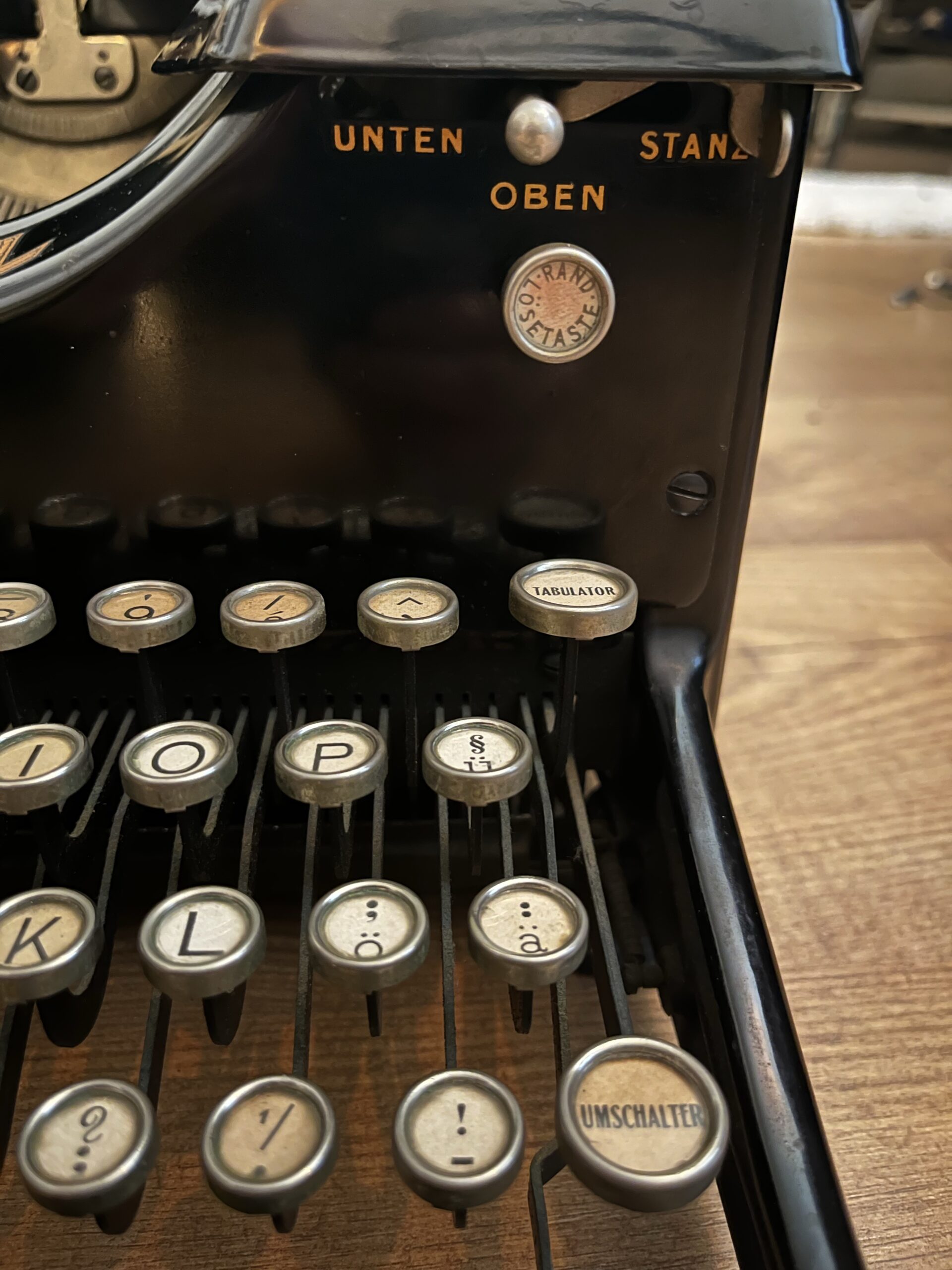

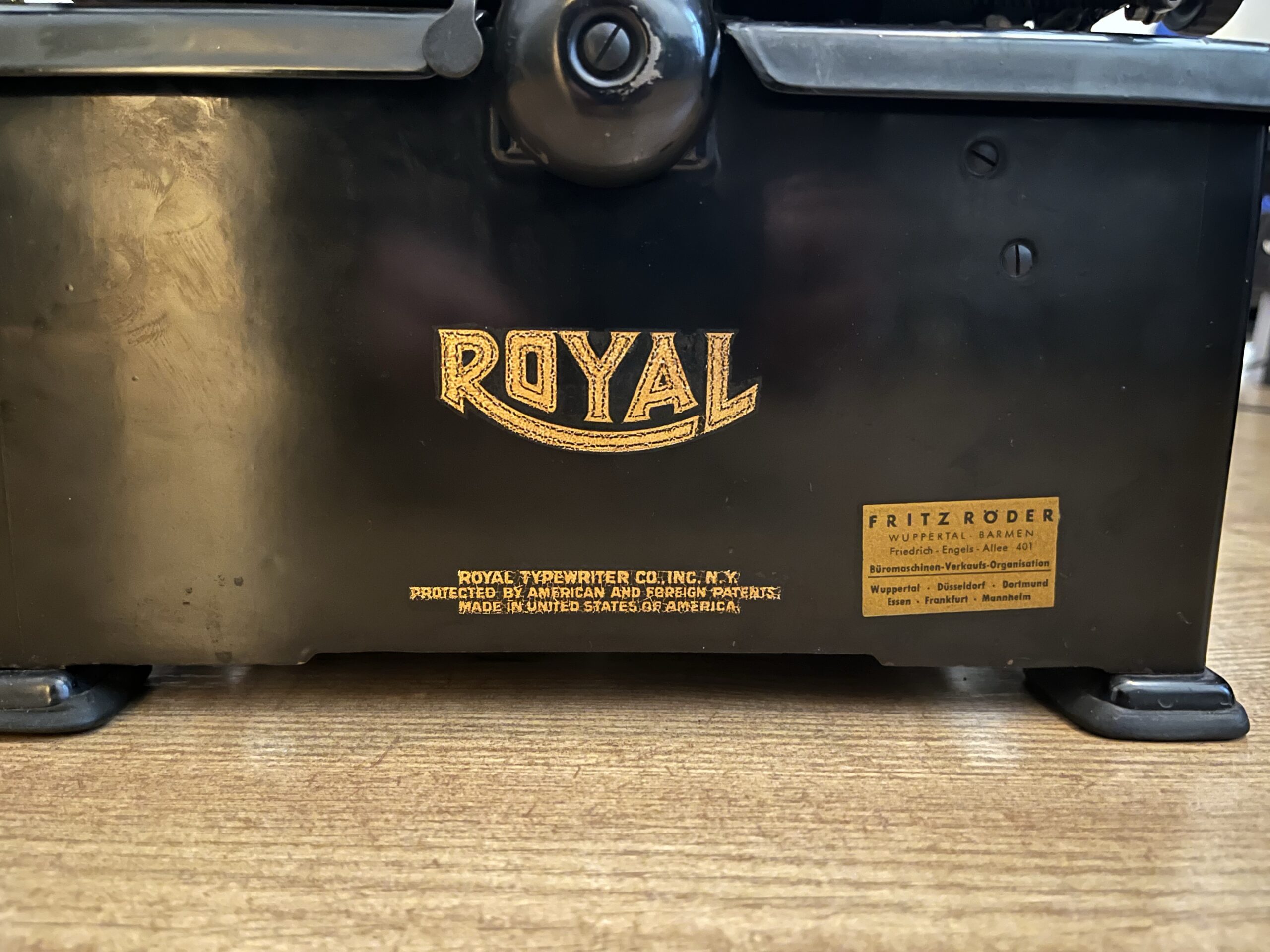
It basically worked – if it hadn’t been packaged and shipped by a madman. Generally speaking, the Royal seems indestructible – except if you let the carriage rest on the escapement, which is what they did. And additionally the carriage wasn’t fixed to the rest of the machine. Just taping down the carriage release buttons would have been enough, probably, but they didn’t do that.
So obviously, something had to break, and I was lucky in that the only thing that did break was the pin holding the escapement pinion pawl in place (labeled “pinion pawl” in the lower left in this image:)

That was a rivet originally, but I replaced it with an M2 bolt and nut, ground down both sides, and that all worked very nicely.
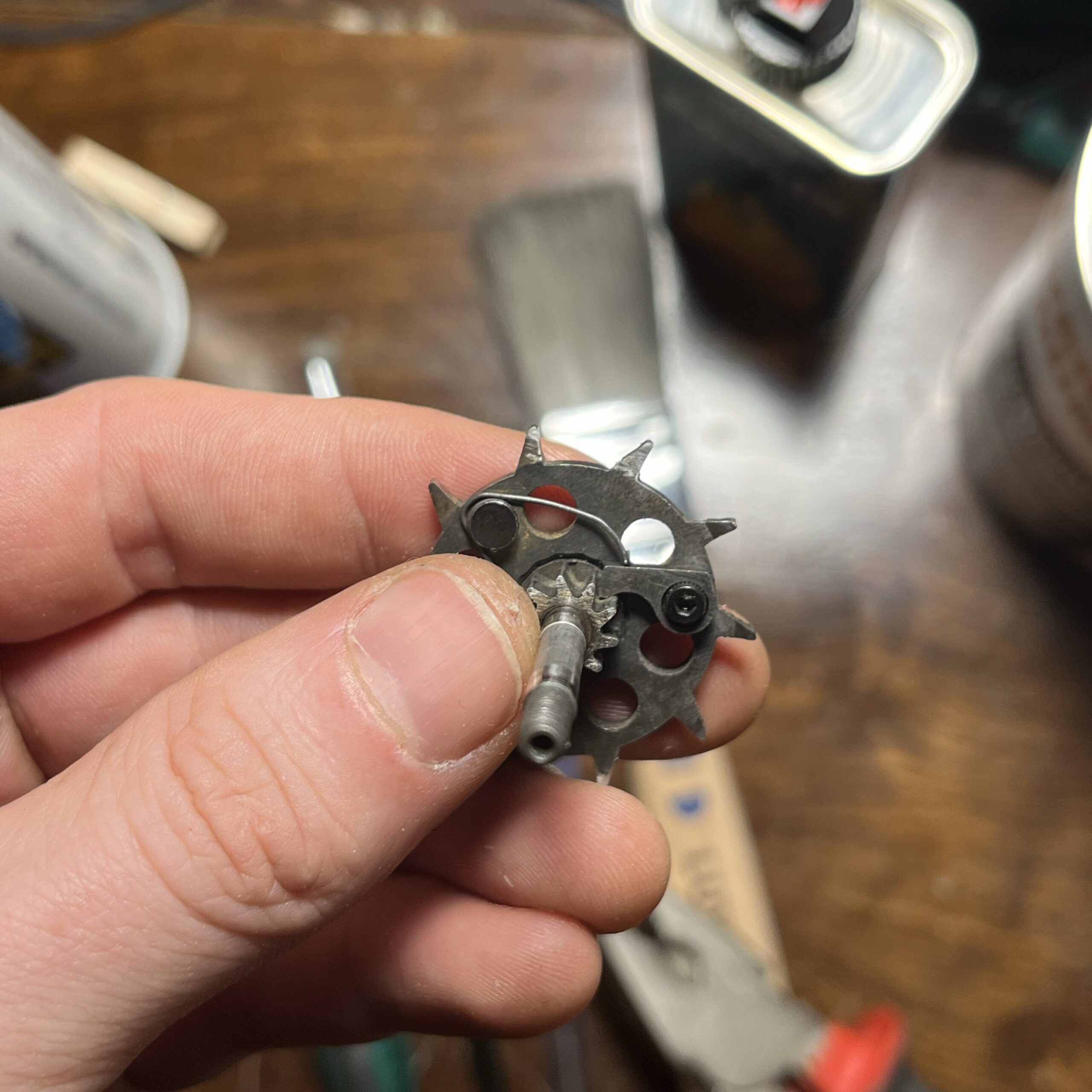
Now getting to the escapement wasn’t a whole lot of fun, it’s directly in the middle under the carriage – which is quite an act to remove in these earlier Royals. On the other hand, it’s all a bit bigger and easier to see than with the old camera shutters that I usually fight against lately.
Now typing on this thing wakes up the dead and deafens the operator. That’s partly because the rubber platen has hardened over the last century but also partly because this thing is just loud by its very nature. It is, however, surprisingly nice to type on. The keyboard feels light and snappy, and it makes very regular imprints, even with very irregular technique. The only thing that slightly hinders the typing flow is the shift operation – carriage shift, which means the whole carriage moves up and down. It’s not that the key is particularly heavy (I think it’s spring-assisted, or at least it feels that way) – it’s more that it’s maybe a kilo of metal and wood and rubber that jumps up and down on your desk with every hit of the shift key. Quiet, soothing love poems are probably best typed all-lowercase on a Royal 10.
Other than that, no real problems. There’s a reason they built this thing basically unchanged for decades – it just works. And types things. And will continue to type things long after I’m dead (basic arithmetic dictates that the original buyer is already dead). Takes standard width typewriter ink ribbons (as they basically all do) and while it does have custom metal spools, I’m pretty sure something universal could be made to fit, if needed.
Not knowing anything about typewriters, that was probably the most surprising thing about it – almost every typewriter ever made has a color selector (I didn’t know that), and also almost all of them have “automatic ribbon reverse” – quite a nice mechanism where the ribbon is first transported in one direction with each key hit, and then automatically reverses into the other direction once you hit the end of the ribbon. Again, not special or unique to the Royal 10 but I kind of expected there to be more …manual? involvement. But no, it’s all automatic, you basically only have to type and change paper every now and then.
Which, for the next 96 years at least, I will do on a Royal 10.
No firmware updates!









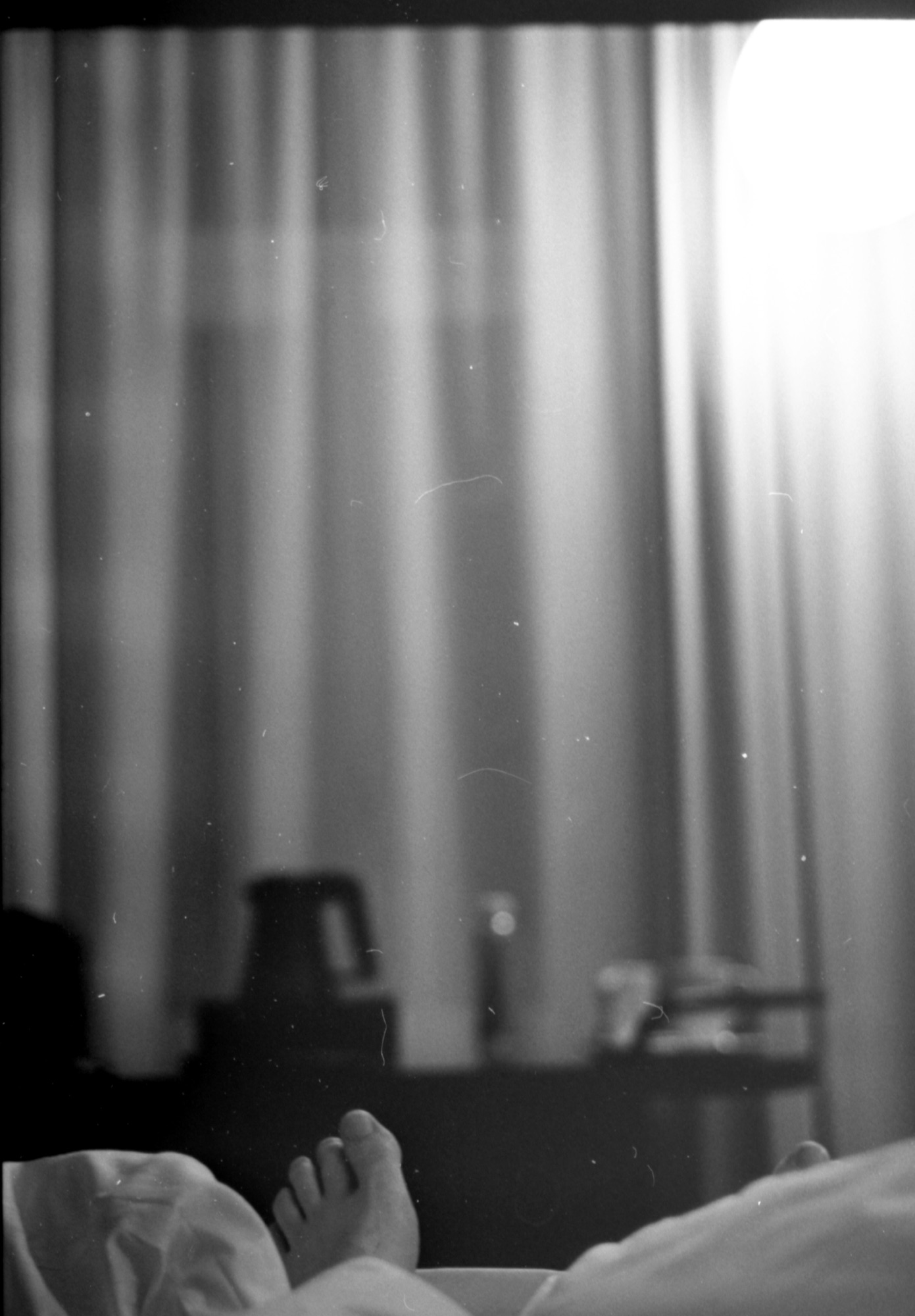
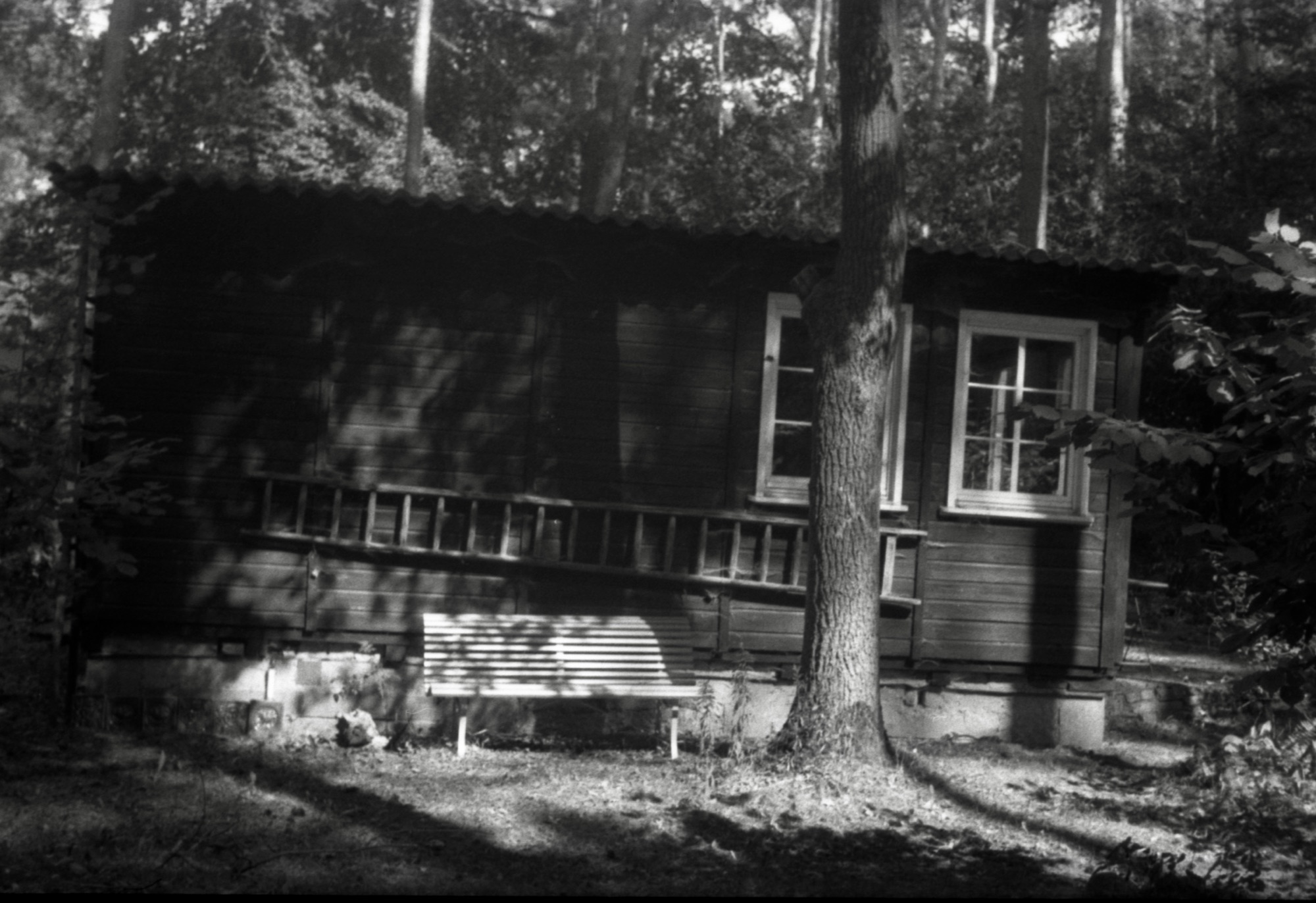

Leave a Reply